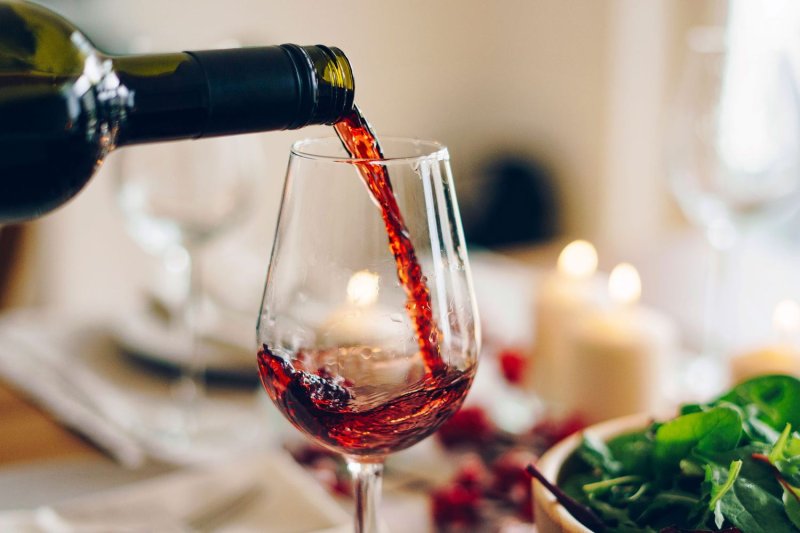Filter Search
Show available only
Categories
Price
Select all
Clear all
$0 - $10
$10 - $50
$50 - $100
$100 - $500
$500 & above
Filter Search
Show available only
Categories
Price
Select all
Clear all
$0 - $10
$10 - $50
$50 - $100
$100 - $500
$500 & above
Product is not availabe in this category, please select other category
ALL ABOUT ROSÉ WINE
Rosé wines pair wonderfully with most dishes. These delicious varieties vary in taste depending on the style and grapes used in their production. Rosé’s typically present light and fruity with flavors like cherries, raspberries, strawberries, melon, citrus, flowers, or even celery. Like other genres, vintners craft rose wines in different styles that can range from dry (low sugars) to dessert wines (high sugars). Rosé wines make up their own genre, like white and red wines. Although rose wines appear slightly red, they don’t quite fit into that category. Instead of leaving in the red grape skins during fermentation, which gives red wines their distinctive color, vintners remove the skins after two to twenty-four hours using a few different methods. The wine darkens depending on how long they leave the skins in before removing them and letting the wine begin fermenting. Check out LiquorSplit’s selections and individual product descriptions to buy a rosé wine that fits your tastes!

History
Rosé wine has been produced for thousands of years, with evidence of early production in ancient Greece and Rome. The 6th century BC, Phoenician traders brought grapevines to France. In the Middle Ages, rosé wine became popular in Provence, France. In the 18th and 19th centuries, rosé wine became popular in many other regions of France, particularly Bordeaux and the Loire Valley. In the 20th century, rosé production expanded to Italy and Spain, often using the saignée method to produce light-colored wine by pressing red grapes after brief maceration. Today, rosé wine is produced in many wine regions around the world, using a variety of grape varieties and winemaking techniques.
How Rosé Wine is Made
Depending on the style of dessert wine produced, the crafting process varies. The winemaking process involves a few different steps. First, winemakers grow and harvest grape varieties that produce a particular style of wine. Then, they prepare the grapes for fermentation by either leaving the bunches on their stems or removing them, which affects the sweetness of the wine. At this point, rosé wine production differs from other genres. Vintners choose one of four methods to reduce the tannin levels that affect bitterness and anthocyanins, which give red wines their color. Their first option, called limited skin maceration, involves pulling the grape peels within two to twenty-four hours. The second method, direct pressing, calls for smashing the grapes with the skins, which leaves a bit of pigment behind. Winemakers third technique, called the Saignée method, requires them to create a red wine, but “bleed” some of the juice from into a separate tank to make a smaller rosé batch. Vintner's final option to craft a rosé entails blending red and white wines together, which actually used to be illegal in the European Union. After all the preparation, vintners start alcohol production by adding yeast to the must to start fermentation. Wine naturally ferments with yeasts in the air if left alone, so most winemakers inoculate the must and add the yeast of their choosing. The soon-to-be wine gets left alone to ferment for at least ten days although most get left alone for much longer periods. Finally, winemakers begin to clarify the wine by filtering it. Sometimes they move the batch from one container to another to leave unwanted material behind, and at other times they use an actual filter. Regardless of the method chosen, they continue to clarify the wine by adding things like compounds, egg whites or clay that help remove excess yeasts and solids left behind. They then move it into another vessel before aging and bottling the product.
Types of
- Rosé Champagne - Sometimes called pink Champagne, this sparkling variety typically tastes like raspberry or strawberries and appears as a light pink or a ruby red.
- Cabernet Sauvignon Rosé - This highly acidic and savory rosé tastes of pepper, green bell peppers, black currant, and cherries.
- Grenache Rosé - The lightest variety, grenache rose typically produces a sweet red fruit flavor like watermelon candy, or lighter like cucumber, which commonly finishes with a zesty sweet lemon like acidity.
- Mourvèdre Rosé - Full bodied Mourvèdre Rosé wine carries a variety of flavors and aromas stacked on top of each other. Different varieties layer floral, fruity, smoky, and even meaty tastes together. Common fruit flavors include peach, plum, cherry, and citrus.
- Provence Rosé - Most Provence Rosé’s develop mineral, earthy bodies complimented by fruit flavors like strawberry, watermelon, and honeydew. They also commonly taste of roses and celery.
- Pinot Noir Rosé - Pinot Noir roses embody a gentle, well balanced acidity with a crisp finish and hints lingering fruit. They often taste of strawberries, orange zest, lemon zest, white cherry, watermelon, and celery.
- Sangiovese Rosé - This variety often presents red fruit flavors like raspberry, strawberry, and cherry. Spices like cumin, allspice, and clove also show up regularly.
- Syrah Rosé - Typically the darkest rose, syrah rose embodies rich flavor, oily texture, and a strong aromatic richness. It often tastes of white cherry, white pepper, red pepper flake, and lime zest, which is much different than its fruitier counterparts.
- Tavel Rosé - These highly alcoholic varieties pack a bit of a burn on the way down like a good cocktail. They commonly carry red berry and watermelon flavors with nutty and earth flavors mixed in for complexity.
- White Zinfandel Rosé - This sweet variety carries herbal tastes like nutmeg and clove, but the prominent candy like flavors.
WHAT DOES ROSÉ WINE TASTE LIKE?
Rosé wines typically present fruity, vegetal, and spicy flavors depending on the region where vintners grew the grapes and the processes used to craft them. They taste sweeter than a lot of red wines since the tannins from the grape peels get pulled from the mixes before fermentation.
.jpg)
How to Drink Rosè Wine
Rosé wines should be served similar to white wines. Sommeliers suggest keeping them in the fridge for an hour before serving to help chill them to the right temperature between 40°F and 50°F. After opening it, you can either put it back in the refrigerator or put it on ice. Use diamond shaped glasses, like the ones used for white wine, to make the most of your rosé. These glasses flare around the middle to keep the wine cool and let the aromas present themselves. Grab them at the stem to help avoid heating them up with your natural body temperatures. If you want to judge your wine like the pros, check out the vintage to learn more about where winemakers crafted it. Next, take a look at the clarity and color to determine if any impurities make it cloudy. Swirl it in the glass, let it settle, and take a good smell before sipping. When you take your first drink, keep it small and swish it around your mouth to let it coat your tastebuds and express itself.
What Makes Rosé Wine Popular?
For people who find red or white wines too bitter, rosé wines offer pleasant alternatives. Just because rosé varieties don’t present bitter doesn’t mean they’re all super sweet. Like other genres of wine, vintners craft them with low sugars (dry) or high sugars (dessert) depending on their intentions. Red grape skins left in the batch add tannins over time, which produce bitter qualities, however, vintners craft rose wines by pulling those skins (using different techniques) within two to twenty-four hours. This leaves them tasting fresh and crisp with light flavors that include spiciness like pepper, mild vegetal flavors like celery or cucumber, fruity flavors like watermelon, strawberry, cherry, or raspberry, or even citrus zests like lemon or lime. Interestingly, rosé wines also create less intense hangovers and contain less calories than similar options. The polyphenols in them lower cholesterol and thin your blood, which lowers cholesterol even further. They also contain lots of antioxidants that benefit heart health. Even after all those benefits, perhaps the most attractive quality of rosé wines comes from their ability to pair with most foods. Light varieties pair well with seafood and salads; fruity options taste great alongside cheeses, and medium-bodied rosé wines compliment meats that aren’t overly sweet (like some barbeques). Most of us enjoy a good beverage with our food, and rose definitely has you covered. Check out LiquorSplit’s catalog to get a rosé wine delivered today!
Please select your delivery location for us to get the order deliver faster.
Home
Cart
Profile
Location
